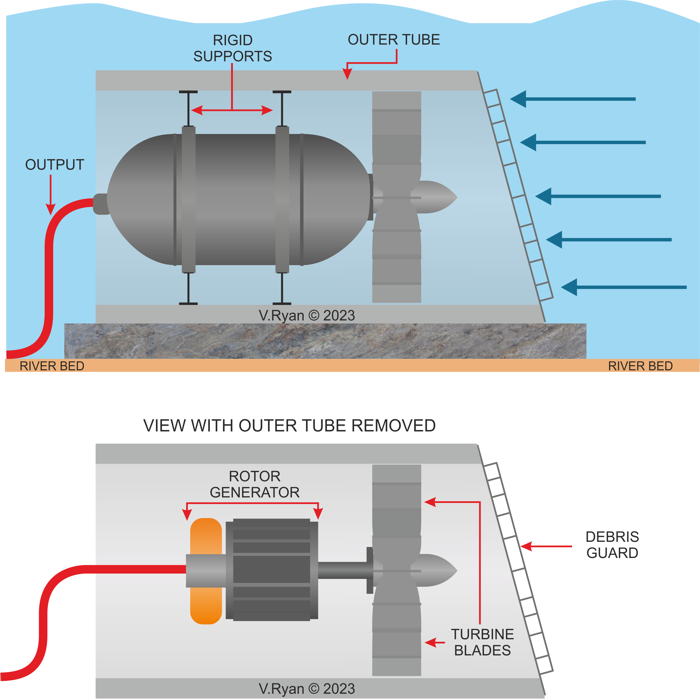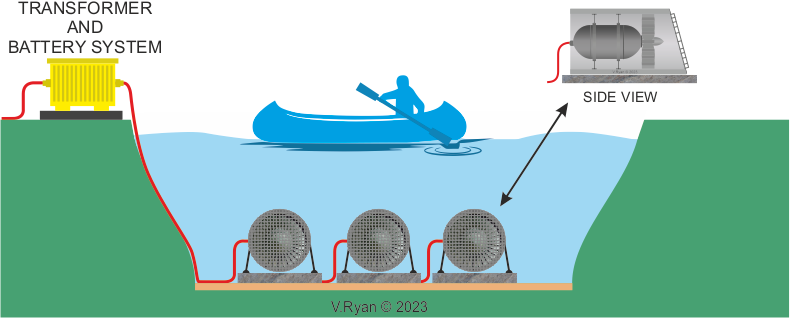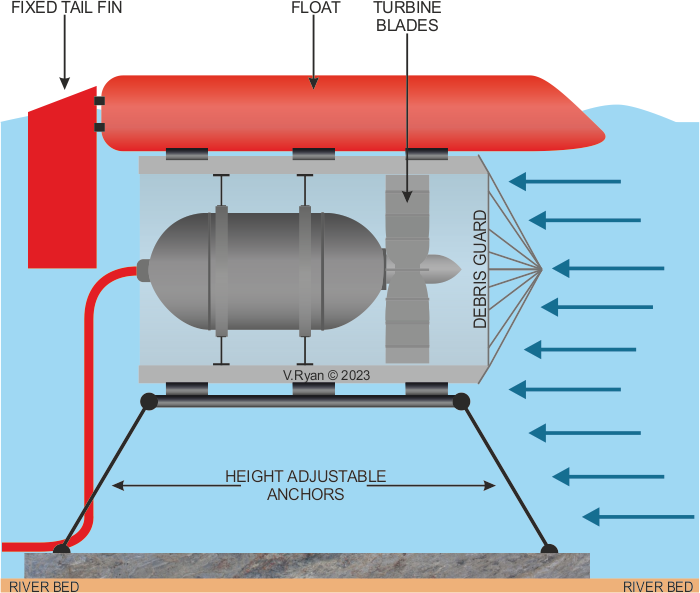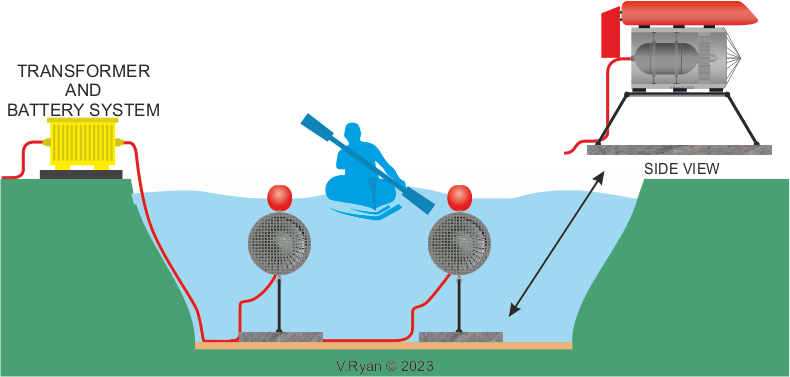| CLICK HERE FOR INDEX PAGE |
| |
| HYDROKINETIC HYDROELECTRIC TURBINES |
| V.Ryan © 2023 |
| |
| PDF FILE - CLICK HERE FOR PRINTABLE WORKSHEET |
| |
| CLICK HERE FOR POWERPOINT VERSION OF WORKSHEET |
| |
| Hydrokinetic Hydroelectric Turbines are designed to generate electricity from the flow of rivers and canals. They are small scale and usually backup or complement existing localised power systems, such as a diesel generator. They are ideal for charging batteries, in the same way as solar power is often used. |
| |
| RIVER BED SYSTEM - HYDROKINETIC HYDROELECTRIC TURBINE |
| |
| The hydrokinetic system shown below, sits on the bed of the river. The water flows through the tube / casing containing the turbine, turning the blades and the rotor generator outputs electricity. |
| |
 |
| |
|
|
| |
One advantage of the river bed system, is that river traffic can pass over the top. However, fishing is restricted, as it cannot take place in areas occupied by the generating systems. Further to this, generating systems have to be released from the river bed when maintenance or repair is due.
An advantage is that they are not seen and do not spoil the view of the river. Hydrokinetic systems are relatively easy to install. They do not face the same challenges as systems installed in the sea, as fresh water does not contain salt and they do not face the turmoil of tidal systems and storms. |
| |
 |
| |
| FLOATING SYSTEMS |
| |
| The hydrokinetic hydroelectric turbine shown below is a floating system. It is anchored to the bed of the river and is ideal for deeper rivers. The fixed tail fin keeps the system in alignment with the flow of the river, ensuring the efficient production of electricity. |
| |
 |
| |
|
|
| |
| The floating system auto-adjusts to the varying water level / height. Surface traffic can find the navigation of the river more difficult. The float also acts as a buoy, indicating the systems position in the river. |
| |
 |
| |
| Floating systems are easier to maintain and repair because they are at the river surface and they can be raised even further. |
| |
|
|
| |
|
| |
|



